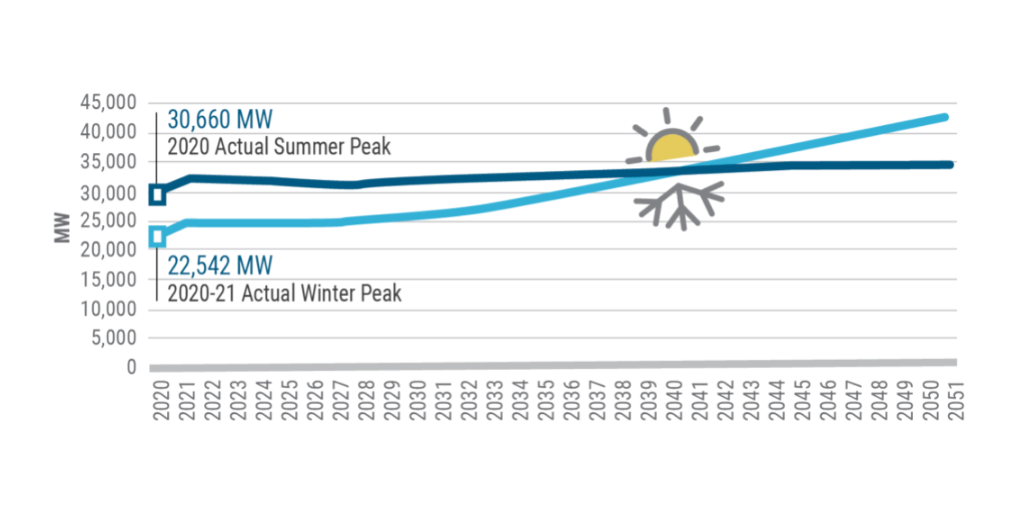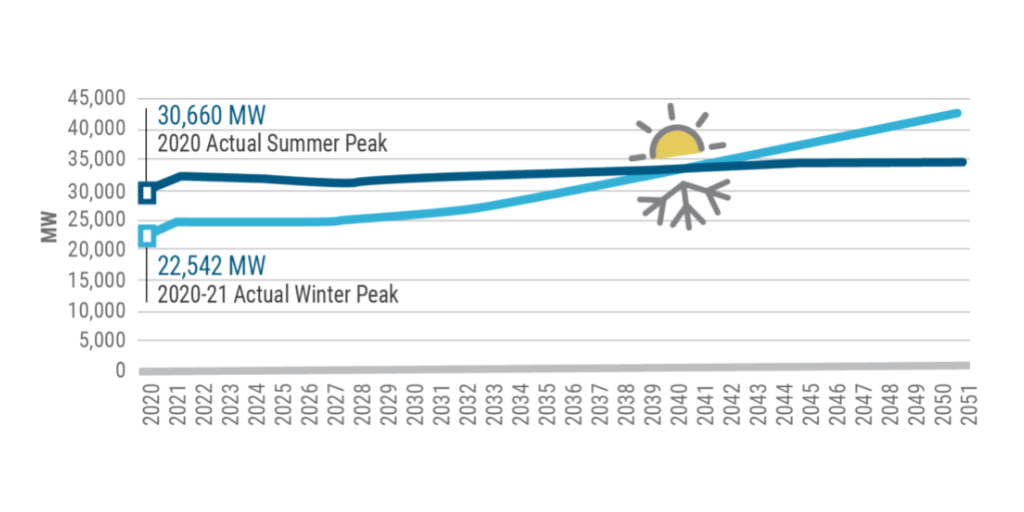How Winter Energy Use May Grow with Electrification

Preparing for peak demand is fundamental to our efforts to maintain grid reliability. Our expert planners analyze meteorological forecasts, economic forecasts, and historical energy demand trends to identify when we think the highest energy demand will be, and how much.
Our engineers use this data to determine how much capacity we need to be available on the grid to meet that demand and the additional reserve we should have in case of unexpected issues.
While one can never precisely predict the size of the year’s highest demand, we generally know when it will happen: during a heat wave in July or August, probably in the afternoon or evening when people get home from work and use air conditioning and other appliances. The last year of COVID changed that dynamic slightly, with so many employees working at home, but summer peak has long been a tenet of the energy industry in New York.
That dynamic is changing.

- Peak demand: a period when electrical demand from consumers rises to a much higher-than-average period, such as during a heat wave.
- Summer peak demand/winter peak demand: the period of maximum energy use that occurs in summer or winter, respectively.
The above figure shows the predicted summer (dark blue) and winter (light blue) demand for the next 30 years. Notice that summer demand is staying fairly constant while winter demand is rising significantly.
Summer peak demand has kept mostly consistent over the last few years. The highest summer peak occurred at the end of a weeklong heat wave in July 2013, when we nearly reached 34,000 megawatts. Since then, the expansion of behind-the-meter solar resources, energy efficiency improvements like LED lighting, better building insulation and related improvements have helped to keep energy use relatively flat over the past few years. Demand response, which offers financial incentives for consumers to reduce energy use when asked, also helps at times of high demand. The figure above shows that over the next 30 years, peak summer demand will continue to remain relatively flat.
Electrification Rising
Meanwhile, we are expecting peak demand in winter to nearly double in this same timeframe. As the state pursues its goals to decarbonize the grid and the broader economy, it is moving to increase electrification by growing electric vehicles (EVs) and electric-powered heat pumps for building heat. As a result, we expect to see winter peak surpass summer peak demand.
This shift could have interesting implications in terms of the role of various energy resources on the grid and the transition to greener technology. Currently, in winter months, fossil fuel generators are able to generate more power than in summer. Conversely, solar power is less effective in winter, with shorter days and the sun at a lower angle.
Electrification will help meet another CLCPA target: reduction of 85% greenhouse gas (GHG) emissions by 2050, when compared to 1990 levels. According to NYSERDA (New York State Energy Research and Development Authority), the energy grid only emits about 15% of the state’s GHG emission. Of the rest, about 36% comes from transportation and 30% comes from building heating and cooling or industrial/commercial use.
Thus, additional electrification through EVs and building heating/cooling will take greater advantage of the clean energy we get from renewable resources. And it will help achieve the CLCPA mandates.
For more on electrification and seasonal energy trends, visit the Power Trends 2021 webpage.
For more on the grid of the future, visit the 2040 Power Grid webpage.

